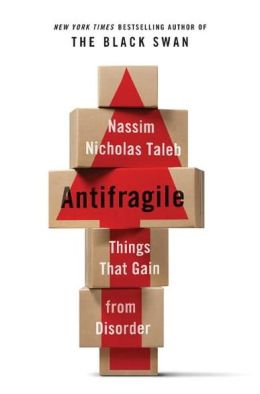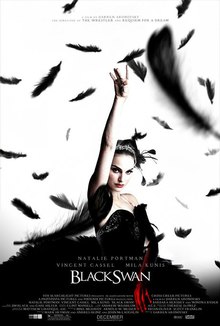One of our favorite thinkers, Nasim Nicholas Taleb, calls this tinkering — the iterative process by which ideas and actions can take root and become successful. Evolution is a wonderful example of this tinkering — repetitive failure and incremental progress. Many entrepreneurs in Silicon Valley take this to heart.
Tech entrepreneur, Michele Serro, describes some key elements to successful tinkering below.
From the Wall Street Journal:
If there was ever a cliche about entrepreneurialism, it’s this: Joe or Jane McEntrepreneur were trying to book a flight/find flattering support garments/rent a car and were profoundly dissatisfied with the experience. Incensed, they set out to design a better way — and did, earning millions in the process.
It seems that, for entrepreneurs, it’s dissatisfaction rather than necessity that is the mother of invention. And while this cliche certainly has its foundation in truth, it’s woefully incomplete. The full truth is, the average startup iterates multiple times before they find the right product, often drawing on one or many approaches along the way before finding traction. Here are five of the most common I’ve come across within the startup community.
Algebra. There’s an old yarn you learn in film school about the power of the pithy pitch (say that five times fast). The story goes that when screenwriters were shopping the original Alien movie, they allegedly got the green light when they summed it up to studio execs by saying ”It’s Jaws. In space.”
In many ways, the same thing is happening in the startup world. “It’s Facebook FB -2.27%. But for pets,” or “It’s Artsy meets Dropbox meets Fab.” Our tendency to do this speaks to the fact that there are very few — if any — truly new ideas. Most entrepreneurs are applying old ideas to new industries, or combining two seemingly unrelated ideas (or existing businesses) together – whether they’re doing it consciously, or not.
Subtraction. Many great ideas begin with a seemingly straightforward question: “How could I make this easier?” Half the genius of some of the greatest entrepreneurs — Steve Jobs springs immediately to mind — is the ability to remove the superfluous, unnecessary or unwieldy from an existing system, product or experience. A good exercise when you are in search of an idea is simply to ask yourself “What is it about an existing product, service, or experience that could — and therefore should — be less of a hassle?”
Singularity. There’s an old saying that goes: “Figure out what you love to do and you’ll never work a day in your life.” Entrepreneurs are born out of the desire to spend one’s life pursuing a passion — assuming that they’re fortunate enough to have identified it early. The fact is that any kind of startup is really, really hard work. No matter how fast a vesting schedule or how convivial an office culture, the only thing that can truly sustain you through the bad days is having a deep, personal interest in your area of focus. The most successful entrepreneurs genuinely love what they do, and not simply because of the potential payoff. I once met a pair of British entrepreneurs living in France who loved nothing more than spending all day in a pub — meeting up with friends, watching a soccer game, and giving each other the requisite hard time about just about everything.
For their entrepreneurial class as part of their MBA coursework at Insead, they decided to draft the business plan for an English-style microbrewery in Paris — mainly because the research phase would involve a lot of sitting around in bars. But during the process of launching their fictitious company, they realized there really was an opportunity to make a living doing exactly what they loved, and went on to successfully launch seven such pubs, sprinkled all over the city.
When hiring at Doorsteps, I start by asking people what they would do with their lives if every career paid the same. If the gap between their truest desires and the job on offer is simply too wide, I encourage them to keep looking. Not because they can’t be successful with us, too, but because they’ll likely be even more successful elsewhere — when they are driven by passion as much as profit.
Optimization. Sometimes entrepreneurs benefit by letting someone else lay the groundwork for their ideas. Indeed, a great many startups are born by simply building a better mousetrap; that’s to say observing a compelling business already in existence but that’s struggling to find traction. These entrepreneurs have the ability to recognize that the idea itself is sound but the execution is flawed. In this case, they simply address the oversight of the previous version. Instagram quite famously beat Hipstamatic to the jaw dropping $1 billion dollar prize by understanding the role social needed to play in the app’s experience. By the time Hipstamatic realized their error, Instagram had almost four times the amount of users, largely muscling them out of a competitive niche market.
Read the entire article following the jump.

 Nassim Nicholas Taleb, one of our favorite thinkers and writers over here at theDiagonal recently published Antifragile, his follow-up to his successful “black swan” title Black Swan. In Antifragile Taleb argues that some things thrive when subjected to volatility, disorder and uncertainty. He labels the positive reaction to these external stressors, antifragility. (Ironically, this book was published by Random House).
Nassim Nicholas Taleb, one of our favorite thinkers and writers over here at theDiagonal recently published Antifragile, his follow-up to his successful “black swan” title Black Swan. In Antifragile Taleb argues that some things thrive when subjected to volatility, disorder and uncertainty. He labels the positive reaction to these external stressors, antifragility. (Ironically, this book was published by Random House). One of our favorite thinkers (and authors) here at theDiagonal is Nassim Taleb. His new work entitled Antifragile expands on ideas that he first described in his bestseller Black Swan.
One of our favorite thinkers (and authors) here at theDiagonal is Nassim Taleb. His new work entitled Antifragile expands on ideas that he first described in his bestseller Black Swan.